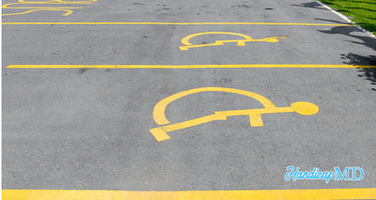
Using Your California Disabled Parking Permit
Introduction
Welcome to our guide on how to use your California disabled parking permit. In this comprehensive article, we will cover everything you need to know about disabled parking tags, including what they are, how to obtain one, and how to use it correctly. Whether you are a disabled individual or are caring for someone who is, this guide will provide you with the information you need to make the most of your disabled parking privileges in California.
What Is a California Disabled Parking Tag?
A California disabled parking tag, also known as a disabled parking placard or handicap parking permit, is a special permit that allows individuals with disabilities to park in designated handicap parking spaces. These spaces are typically located close to building entrances and are designed to provide easier access for those with mobility issues.
Types of California Disabled Parking Tags
In California, there are two main types of disabled parking tags: placards and license plates. Both types of tags serve the same purpose, but there are some differences between them.
Placards: Placards are hangtags that can be placed on the rearview mirror of a vehicle when parked. They are designed to be easily removable and can be transferred between vehicles.
License Plates: Disabled parking license plates are permanent plates that are affixed to a vehicle. They are issued by the Department of Motor Vehicles (DMV) and are only available for vehicles that are owned or leased by a disabled individual.
How to Obtain a California Disabled Parking Tag
To obtain a disabled parking tag in California, you must meet certain eligibility criteria. These criteria vary depending on the type of tag you are applying for.
Eligibility Criteria for Placards
To qualify for a disabled parking placard in California, per the ADA you must meet one of the following criteria:
- You are unable to walk 200 feet without stopping to rest.
- You are unable to walk without the use of or assistance from a brace, cane, crutch, another person, prosthetic device, wheelchair, or other assistive device.
- You are restricted by a lung disease to such an extent that your forced (respiratory) expiratory volume for one second, when measured by spirometry, is less than one liter or your arterial oxygen tension is less than 60 mm/hg on room air at rest.
- You are severely limited in your ability to walk due to an arthritic, neurological, or orthopedic condition.
Eligibility Criteria for License Plates
To qualify for disabled parking license plates in California, you must meet one of the following criteria:
- You have a severe visual impairment.
- You have a severe mobility limitation due to a neurological, arthritic, or orthopedic condition.
- You are certified by a licensed physician as having a physical disability that limits your ability to walk.
How to Use Your California Disabled Parking Tag
Once you have obtained your California disabled parking tag, it is important to use it correctly to ensure that you are complying with state laws and regulations. Here are some tips for using your disabled parking tag:
Display the Tag Properly: If you have a placard, make sure to hang it from your rearview mirror when parked in a disabled parking space. If you have license plates, they should be clearly visible on the front and rear of your vehicle.
Park in Designated Spaces Only: Disabled parking tags are only valid in designated handicap parking spaces. Do not park in regular parking spaces unless you have no other option.
Observe Time Limits: Some disabled parking spaces have time limits. Make sure to observe these limits to avoid fines or towing.
Do Not Transfer Your Tag: Disabled parking tags are issued to individuals, not vehicles. Do not transfer your tag to another person or vehicle.
Follow State Laws: Familiarize yourself with California's disabled parking laws and regulations to ensure that you are using your tag correctly.
Where You Can Park
In California, individuals with disabilities can park in designated accessible parking spaces. These spaces are marked with the International Symbol of Access (ISA) and are usually located close to building entrances or facilities. It's important to note that not all parking spaces marked with blue paint are designated accessible parking spaces.
Where You Cannot Park
It is illegal to park in spaces reserved for individuals with disabilities without a valid DP Parking Placard or DP License Plates. Parking in an accessible space without a valid permit can result in fines and penalties. It's also important to avoid parking in access aisles next to accessible parking spaces, as these are meant to provide additional space for individuals with disabilities to enter and exit their vehicles.
Misuse of Disabled Parking Tag
Misusing a DP Parking Placard or DP License Plates is a serious offense. This includes using a placard or license plate that belongs to someone else, using an expired placard or license plate, altering a placard or license plate, or using a placard or license plate that has been canceled or revoked.
Displaying an Invalid Tag
It is important to display a valid DP Parking Placard or DP License Plates when using accessible parking spaces. The placard should be hung from the rearview mirror when the vehicle is parked, and the license plates should be visible on the vehicle when it is parked. Failure to display a valid tag can result in a parking citation.
Exceptions
There are some exceptions to the rules regarding the use of disabled parking tags. For example, if a person with a disability is being transported in a vehicle, the vehicle can park in an accessible space even if the person with the disability is not driving. Additionally, certain vehicles, such as buses and delivery vehicles, may be allowed to park in accessible spaces for short periods of time to load or unload passengers or goods.
Penalties for Misuse
Misusing a DP Parking Placard or DP License Plates can result in fines, penalties, and even the revocation of the placard or license plates. In California, fines for misuse of a disabled parking tag can range from $250 to $1,000, depending on the circumstances. Repeat offenders may face higher fines and other penalties.
Conclusion
In conclusion, a California disabled parking tag can provide individuals with disabilities greater mobility and access to essential services. By understanding how to obtain and use your tag correctly, you can ensure that you are making the most of this important privilege. If you have any questions about disabled parking tags in California, contact your local DMV office for more information or just click the link to connected to a team that specializes in helping patients get handicap permits that need them.
.png)






